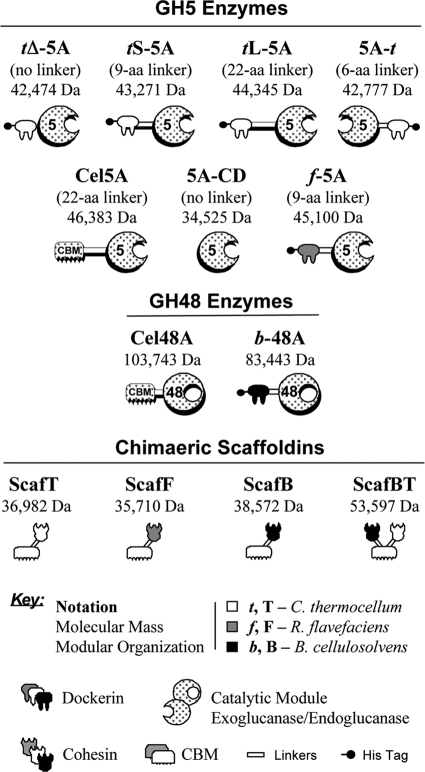FIG. 1.
Schematic representation of the recombinant proteins used in this study. The CBM2 of wild-type T. fusca enzymes (Cel5A or Cel48A) was replaced by a dockerin at the indicated position relative to the catalytic module. The shading of each symbol denotes the source of the module: stippled (T. fusca), white (C. thermocellum), dark gray (R. flavefaciens), black (B. cellulosolvens). The corresponding bacterial source—C. thermocellum, R. flavefaciens or B. cellulosolvens—is additionally indicated by the following notations: t, f, or b for the dockerins and T, F, or B for the cohesins, respectively. Chimeras f-5A, tL-5A, tS-5A, tΔ-5A, 5A-t, and b-48A included a His tag, attached distally to the respective dockerin module of the enzyme. The divergent species of cohesin-bearing scaffoldin (Scaf) included a C. thermocellum CBM3a, shown symbolically. The molecular mass is shown for each of the expressed proteins.

